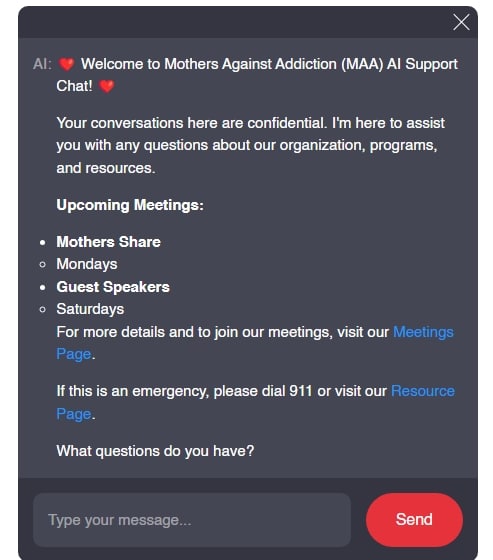The Power of Personal Narratives in Addiction Awareness
Storytelling in addiction awareness serves as a beacon for connection, empathy, and understanding. When individuals open up about their personal journeys, they go beyond cold statistics and bring humanization to the forefront. These stories can break the chains of stigma, encouraging those battling addiction, as well as their families, to seek help. From heart-wrenching losses to inspiring recoveries, each narrative deepens the conversation, reminding us all that addiction is not merely a clinical condition; it’s a profoundly personal experience that resonates within families and communities alike.
Sharing a personal experience can light a candle for someone lost in darkness. Take, for example, the mother who lost her son to addiction. Her story grips your heart; you feel her pain, her sorrow. In sharing this narrative, others who may be feeling hopeless, or ashamed can see that they aren’t alone in their struggles. These accounts—like those of the McCarthy family and Elizabeth Vargas—made it clear that it’s okay to talk about addiction openly, without the heavy weight of judgment.
Ultimately, the tales of triumph and hardship related to addiction remind us that healing is possible. Personal stories give voice to collective experiences and foster discussions that can lead to understanding and, eventually, compassion. Addiction Myths in society often paint a narrow picture. Storytelling in addiction awareness broadens that perspective, reminding us all that every individual’s journey is unique, shaped by a myriad of factors—both internal and external.

Top 7 Stories That Changed Perceptions of Addiction
After tragically losing their son to an opioid overdose, the McCarthy family didn’t just grieve; they rallied. They founded “Shift the Stigma,” a nonprofit that illuminates the dark corners of addiction through community events and impactful social media campaigns. Their personal narrative has kickstarted vital conversations about recognizing addiction as a disease requiring compassion, not condemnation.
As an advocate, Ryan Hampton stands as a powerful reminder of recovery’s potential. Author of “American Fix,” Ryan shares his own story of battling addiction. He underscores the vital role of community support in the recovery journey. His narrative shines like a lighthouse, illuminating paths of hope for countless individuals who feel ensnared by addiction.
This unique initiative embodies shared stories from families impacted by the War on Drugs, spotlighting the human cost of stigmatization. By harnessing these powerful voices, the campaign calls for reform that prioritizes health over punishment. We can view addiction through a lens of empathy and understanding, as it is ultimately a health crisis.
Elizabeth Vargas, known for her role as a television host and journalist, laid bare her struggles with alcohol addiction in her memoir, “Between Breaths.” Her frank portrayal not only shares her personal challenges but highlights societal pressures leading many to depend on substances. Vargas’s story resonates widely. It encourages open dialogues, particularly in media circles, about addiction, vulnerability, and recovery.
In Ohio, a community embarked on a compelling storytelling project, urging locals to share their addiction experiences. Through podcasts and live storytelling events, they created a robust network of support, illustrating how community resilience can effectively combat addiction.
This powerful initiative amplifies authentic recovery narratives across various platforms. By highlighting personal journeys, the campaign dismantles damaging stereotypes surrounding addiction and fosters a sense of belonging among individuals who’ve faced similar challenges.
Using creativity as a means of expression, the Wildflower Project invites individuals in recovery to share their stories through artistic endeavors. This endeavor demonstrates the healing potential of art intertwined with narrative, facilitating discussions about addiction’s impact on lives.
The Transformational Role of Storytelling in Healing
Engaging in storytelling in addiction awareness goes beyond individual experiences; it’s about forming a collective narrative that emphasizes healing, resilience, and hope. Research underscores the importance of these overcoming narratives in fostering connections that significantly impact those seeking recovery. They stir emotional responses and serve as assurances that none of us is alone in our struggles.
Moreover, communities that prioritize sharing stories cultivate environments ripe with support and understanding. Programs focusing on storytelling allow individuals to confront their traumas and release their pent-up emotions. Through this process, narratives transform shame into strength, leading to personal empowerment and a reclamation of identity.
On a broader scale, storytelling serves as a catalyst for political change. When individuals share their journeys, they remind lawmakers of the human component of their decisions. This newfound advocacy encourages comprehensive treatment options and accessible mental health services over mere punitive actions. Amplifying their stories can drive the critical reforms society needs.

Empowering Through Shared Experiences: A New Path Forward
The narrative surrounding addiction is evolving. Storytelling in addiction awareness has become a lifeline for those grappling with the crisis, transforming it into a potent instrument for societal change. As more individuals share their experiences, stigma surrounding addiction melts away. This newfound openness allows families and individuals to find solace and camaraderie through the shared nature of their experiences.
As we navigate a future filled with stories, we find that these narratives inspire resilience and foster hope. It creates an inclusive community that addresses addiction with compassion, rather than fear. By celebrating and amplifying these narratives, we forge a future where recovery isn’t just possible; it’s a collective goal.
In the online landscape, countless resources share personal stories, advocating for recovery. Platforms like Blogging about recovery provide valuable spaces for individuals to narrate their experiences, thus enriching the field of addiction awareness. As we integrate advocacy through art into our discussions, we unlock more pathways for understanding. Through these creative outlets, we can help ourselves and each other regain strength and renew hope.
In closing, embracing storytelling in addiction awareness is crucial for fostering a network of support, influencing societal perceptions, and inspiring resilience. As more voices join this ongoing conversation, a brighter, more hopeful future emerges for those touched by addiction.
Storytelling in Addiction Awareness
The Power of Sharing Stories
Storytelling in addiction awareness isn’t just about sharing experiences—it’s a form of empowerment. Did you know that many individuals find solace in tales of resilience, as they create a sense of community? For instance, an inspiring story can sometimes feel as wondrous as discovering a cheat skill in another world. When people hear that they’re not alone in their experiences, it can restore hope and foster connection. The stories people share can transform lives, helping both the narrators and the listeners navigate their own paths. It’s a beautiful cycle that lends itself to healing and growth, reminding everyone that recovery is attainable.
Engaging with Narratives
While stories play a crucial role in personal healing, they also serve a significant purpose in educating the public. Juxtaposing lived experiences with facts highlights the sober reality of addiction and its impacts. In fact, sharing real-life accounts in community settings can set the stage for more profound discussions about addiction treatment options and support systems, much like you would consider the best rate mortgage rooted in solid financial choices. Gathering around a storytelling circle can help groups of parents feel empowered and less isolated, driving home the message that there’s a light amid the struggles.
Finding Strength in Stories
On a lighter note, storytelling events can feel a lot like a simple conversation among friends, where the tales shared evoke laughter, tears, and a sense of understanding. It’s often similar to navigating a gripping manga plot, for example, in Frienen, where characters face their challenges but come out stronger and united. And remember, at its core, what’s a compound? It’s not only about mixing ingredients but about forging meaningful connections, much like the bonds that storytelling fosters. Through sharing, families connect. They understand the realities of addiction, and with each story, they spark resilience and hope while banishing isolation.
Embracing stories encourages a culture of openness and support, proving that through narrative, we can inspire transformation and resilience in the face of addiction.

How do you start a story about addiction?
You can kick off a story about addiction by setting the scene with a character who faces real-life struggles, like a heavy loss or deep anxiety. Share their emotions and thoughts as they make choices that lead them toward substance use, showing how those choices seem to fill a void or escape painful feelings.
Why is telling a recovery story helpful to clients and staff?
Telling a recovery story can be super helpful for both clients and staff because it highlights hope. When others hear how someone turned their life around, it shows them that recovery is possible and encourages them to keep pushing through tough times.
What are two skills that could assist you in avoiding substance abuse?
To steer clear of substance abuse, two helpful skills are learning to say no effectively and building up your self-esteem. Saying no can help you avoid negative influences, and having strong self-esteem keeps you grounded in your values and choices.
What is storytelling intervention?
Storytelling intervention is a method that uses stories to help kids express their emotions and thoughts. By engaging with narratives, children uncover their feelings and learn to communicate better, which aids in their emotional growth and understanding of themselves.
How do you write a therapeutic story?
Writing a therapeutic story involves thinking about the emotions you want to convey and the lessons you want to teach. Start by outlining the character’s journey, including their struggles and triumphs, and then weave in relatable events that resonate with those who might be experiencing similar situations.
How do you start a story example?
A good way to start a story is by introducing a specific moment or conflict that grabs attention. You could depict a character’s struggle or a significant event that sets the stage for what’s to come, sparking curiosity from the very beginning.
Why is it important to share your story in recovery?
Sharing your story in recovery is crucial because it not only helps you process your own experiences but also connects you with others. It creates a sense of community and reminds people they aren’t alone in their journey.
What is the importance of the client telling her story?
Allowing the client to tell her story is important as it gives her ownership over her narrative. It empowers her to voice her struggles and victories, leading to greater understanding and healing in her recovery process.
What is the recovery story outline?
A recovery story outline typically involves the setup of the character’s life before addiction, the turning point that leads them to substance use, the struggles faced during addiction, and the pathway to recovery, culminating in a hopeful conclusion.
What are the two refusal skills for drugs?
Two refusal skills for drugs include asserting your choice confidently, such as saying, “I don’t do drugs,” and providing an alternative activity to distract from the pressure, like inviting friends to watch a movie instead of going to a party.
What are the two defense mechanisms commonly used by people who have an addiction?
People with addiction often use defense mechanisms like denial, where they refuse to accept the reality of their situation, and rationalization, where they come up with excuses to justify their use.
What is the coping model of addiction?
The coping model of addiction suggests that people might resort to substance use as a way to manage stress and emotions. It points to the need for healthy coping strategies and skills to deal with life’s challenges instead of relying on substances.
What are the 5 P’s of storytelling?
The 5 P’s of storytelling include purpose, people, plot, place, and perspective. These elements help create a well-rounded story that resonates with the audience and conveys the message effectively.
What are the 4 C’s of storytelling?
The 4 C’s of storytelling are character, conflict, climax, and conclusion. Focusing on these elements helps in structuring the narrative so it keeps the audience engaged from start to finish.
Why is storytelling therapeutic?
Storytelling is therapeutic because it offers a safe space to explore emotions and experiences. It encourages self-reflection and facilitates connection with others, making it easier to process complex feelings.
How to describe addiction in writing?
Describing addiction in writing means painting a vivid picture of the struggles, changes, and emotional turmoil experienced by someone caught in its grip. Use relatable language and imagery to convey the depth of their challenges.
How do you start a storyline?
Starting a storyline involves introducing the main character and their internal or external conflicts right from the get-go. This not only hooks readers but also lays the groundwork for their journey throughout the story.
What is the introduction of addiction?
The introduction of addiction can be described as a gradual process where a person begins to use substances to cope with stress or pain, often leading to a cycle that spirals out of control. It emphasizes how easy it is to fall into that path.
How do you write an addictive story?
To write an addictive story, focus on the character’s emotional landscape and the driving need that leads them to substance use. Use sensory details to evoke feelings and create relatable scenarios that highlight the highs and lows of addiction.




























